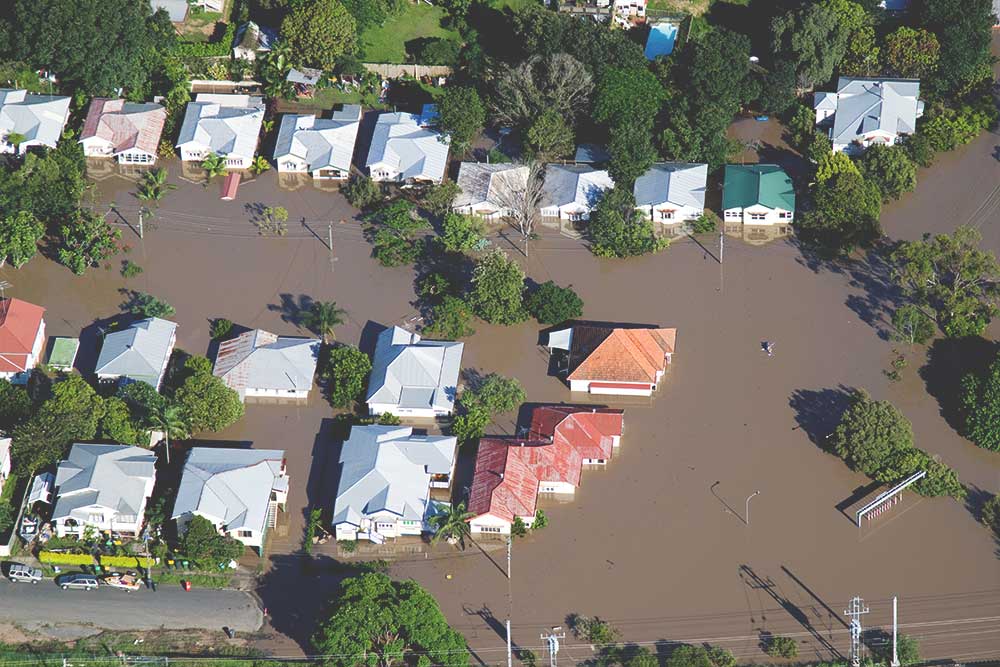Effective May 21, 2023, P&N has joined EisnerAmper. Read the full announcement here.

As with hurricanes, floods, and other disasters in the past, many victims of Hurricane Ida have experienced casualty losses due to storm damage and flooding. In general, a casualty loss is a type of loss that is often a result of a sudden, unexpected, or unusual event such as a storm, flood, or natural disaster. Postlethwaite & Netterville knows all too well the impacts of natural disasters, as South Louisiana has experienced hurricanes, severe flooding, and other weather-related emergencies. To help you understand the casualty loss deduction, specifically a loss deduction after a federally-declared disaster, we’ve put together some general information below.
Issues
- What are the rules for calculating a casualty loss deduction?
- What are the casualty loss rules in a federally-declared disaster?
Short Answers
The general casualty loss rules apply such that, for individuals, the loss deduction is only allowed to the extent that it exceeds $100 and 10% of adjusted gross income.
While taxpayers are normally required to take a deduction for casualty loss in the year the loss occurred, taxpayers can elect to take the casualty loss deduction for the taxable year immediately preceding the year of the loss for losses occurring as a result of and in a federally-declared disaster area.
Discussion
Casualty Loss – General
I.R.C. § 165 provides a deduction for losses sustained during the taxable year and not compensated for by insurance or otherwise. For individuals, this deduction is limited to losses incurred in a trade or business, losses incurred in any transaction entered into for profit, and, subject to certain limitations, losses of property not connected with a trade or business or transaction entered into for profit, if the losses arise from storm or other casualty.
In general, the basis for determining the amount of the deduction for any loss is the adjusted basis of the property as calculated pursuant to I.R.C. § 1011 for determining the loss from sale or other disposition of property. For casualty losses, however, the amount of loss available for deduction is equal to the lesser of the fair market value of the property immediately before the casualty reduced by the fair market value of the property immediately after the casualty or the adjusted basis for purposes of I.R.C. § 1011. This amount is then further reduced for any insurance or other type of compensation received for the loss.
After the amount of loss is determined, the deduction for individuals is further limited in two ways: a $100 limit per casualty and a limit of 10% of adjusted gross income. With respect to the first limitation, a casualty loss deduction is only allowed to the extent that the amount of loss, per casualty, exceeds $100.
Furthermore, the loss is only allowed to the extent that it exceeds the taxpayer’s casualty gains for the taxable year and 10% of the individual’s adjusted gross income. Importantly, in the case of a loss covered by insurance, the loss deduction shall only be allowed if the individual timely files a claim for insurance relating to the loss.
Special Rules for Disaster Relief
Taxpayers are generally required to take a deduction for casualty losses described above in the year in which the loss is sustained. However, in the cases of any loss arising from a disaster and occurring in a federally declared disaster area, a taxpayer may elect to take the loss into account for the taxable year immediately preceding the taxable year in which the disaster occurred.
An election to claim a deduction for the tax year immediately preceding the taxable year in which the loss actually occurred must be made by filing a return, an amended return, or a claim for refund clearly showing that the election has been made. Administrative guidance indicates that a taxpayer can meet this requirement by including a statement that the election is being made and specifying the location and dates of the federally declared disaster. This election must be on or before the date that is six months after the regular due date for filing your original return (without extensions) for the tax year in which the disaster actually occurred. Note that taxpayers are only eligible to take a casualty loss deduction if they itemize their deductions rather than using the standard deduction. For this reason, I.R.S. administrative guidance instructs taxpayers with casualty losses to determine if, as a result of the casualty loss, it may be more advantageous to itemize deductions rather than to use the standard deduction for either an original or amended return.
If you have any questions regarding casualty losses, please contact your P&N representative or contact us to speak to a tax professional.
This information was updated from the original version published on August 30, 2017.



